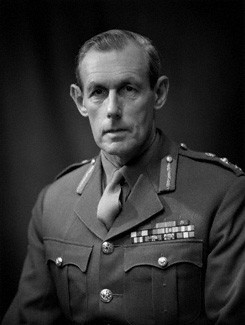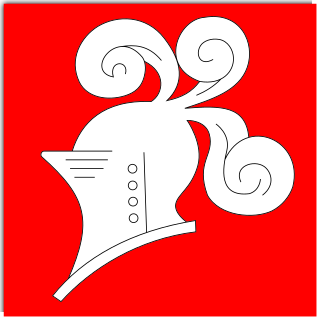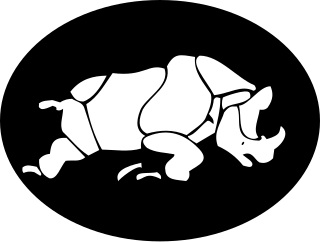| Mobile Division, Egypt / Mobile Division (Egypt) Armoured Division (Egypt) 7th Armoured Division | |
|---|---|
 Percy Hobart, the first commanding officer of the Mobile Division (Egypt) | |
| Active | 1938–1958 |
| Country | |
| Branch | |
| Engagements | Second World War |
The 7th Armoured Division was an armoured division of the British Army and formed in 1938. The division was commanded by a general officer commanding (GOC), who received orders from a level above him in the chain of command, and then used the forces within the division to undertake the mission assigned. In addition to directing the tactical battle in which the division was involved, the GOC oversaw a staff and the administrative, logistical, medical, training, and discipline concerns of the division. [1] From its founding to when it was redesignated in the 1950s, the division had 18 permanent GOCs; one of whom was killed and another wounded.
Contents
The division was formed in Egypt, from mechanised-cavalry and tank units that were based there, following raising tensions with Italy. In 1939, the Mobile Division was renamed the Armoured Division and then became the 7th Armoured Division a year later. Following the Italian entry into the war, in June 1940, the division skirmished with their opposing forces throughout several engagements. After the Italian invasion of Egypt, a British counterstroke (Operation Compass) was launched in December 1940 and the division was able to help in the destruction of the Italian Tenth Army. Over the following two years, it fought in all the major battles of the back and forth Western Desert campaign. The fighting in the Western Desert saw the death of one commanding officer, Jock Campbell. Following the Second Battle of El Alamein it assisted in the pursuit west and joined in the Tunisian campaign and that fighting resulted in John Harding being wounded. While not selected for the subsequent Allied invasion of Sicily, it did land in mainland Italy for the opening stages of the Italian campaign. Chosen as a veteran formation to bolster the Second Army for Operation Overlord, the division was withdrawn to the UK and then landed in France in June 1944. It then fought in the Battle of Caen, notably at the Battle of Villers-Bocage and during Operation Goodwood. Following the Allied victory in Normandy, the division pushed east across France into the Low Countries, supported Operation Market Garden, and then took part in the Western Allied invasion of Germany.
The division was located in Germany at the end of the war and became part of the British Army of the Rhine. It was temporarily disbanded, when it was turned into a military district although it was soon reactivated. It remained in Germany until it was finally disbanded in 1958. The legacy of the division was maintained by the 7th Armoured Brigade until 2014, when it was reorganised as the 7th Light Mechanised Brigade Combat Team.







